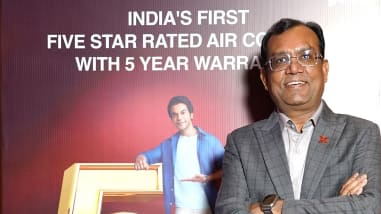Jain says traditional distribution business is shrinking, while organized retail, large format retail (LFR), and e-commerce are growing rapidly.

Sunil Jain, CEO, Kenstar
In a recent conversation with FE Retail, Sunil Jain, CEO of Kenstar, shares that durable and energy-efficient appliances are witnessing strong demand. He also talks about India’s diverse buying behaviour in the category. He says what resonates with consumers in Tamil Nadu may not necessarily click in Maharashtra, underlining the need for region-specific product strategies. In FY25, the company clocked a revenue of INR 850 Cr and now targeting a 45% growth in the coming year.
Excerpts:
How have retail buying trends in the consumer durables space evolved over the past 3–5 years?
The last couple of years have seen a clear shift. Traditional distribution business is shrinking, while organized retail, large format retail (LFR), and e-commerce are growing rapidly. A significant share is moving from conventional distributors to LFR and online platforms.
What changes have you observed in consumer buying behavior?
Consumers are increasingly choosing value-driven, feature-led products that combine design, durability, and smart technology especially in appliances.
Which retail formats does Kenstar operate in, and how does buying behavior differ across them?
We are present across quick commerce, marketplaces, LFR, regional retail, and traditional channels. In metro and Tier-I cities, purchases are dominated by e-commerce and LFR. In Tier-II and III towns, traditional distribution still leads, driven by personal relationships between local retailers and customers. Technology-led products sell more in metro and Tier-I cities but are gradually penetrating smaller towns.
Can you share sales distribution by format?
E-commerce: 25–30% of total sales
LFR & Regional Retail: ~50% in South and West India; 15–20% in North and East
Traditional Retail: ~30% overall; ~40% in North and East
How is Kenstar innovating to meet evolving consumer needs?
Air Coolers: Launched BLBC Max Technology which gives 60% lower power consumption, humidity control for monsoon season, and reduced noise levels (between a split AC and traditional cooler).
Kitchen Appliances: Mixer grinders with Endura Plus technology, copper motors, and Ultima Blades for better grinding performance.
Water Heaters: SWIRL technology for 20% more hot water output and high-density insulation for 10% longer heat retention.
How has the market responded to these innovations?
In the first year, BLBC Max contributed over 10% of air cooler sales. This year, we expect 25–30% share from such technology-driven products.
Is there a visible shift toward energy-efficient appliances?
Yes, though adoption in kitchen appliances is slower. We’re working to integrate BLBC-like efficiency into other product categories.
How are you positioning Kenstar against established brands and new-age D2C players?
We are strengthening our marketplace presence, D2C website, and LFR partnerships. Investments are going into CRM, marketing automation, and last-mile logistics to enhance D2C capabilities.
What is your current market share?
Air Coolers (All India): 22–23%
South/East India & Maharashtra: 30–40%
North India: 10–12%, with a target to reach 20% in three years
What are your targets for FY26 and new market priorities?
We’re focusing on Tier-II and III towns, where growth outpaces metro and Tier-I cities. Retail base expansion is a priority.
How equipped is Kenstar to serve these markets?
We operate 22 warehouses, enabling delivery to any pin code within 15 hours. Our retail and distributor network exceeds 35,000 partners.
Are you customizing products for regional needs?
Yes. India’s diversity demands region-specific products. What sells in Maharashtra may not suit Tamil Nadu. Product development is aligned with local preferences.
What investment is planned for expansion?
We will invest INR 10–12 crore this year in technology, logistics, warehousing, and software and not in manufacturing assets.
What steps are being taken toward energy efficiency and sustainability?
BLBC technology in air coolers is one example. We’re working toward carbon credit eligibility and plan to extend similar innovations to mixer grinders and other products.
How are changing lifestyles shaping your product and marketing strategy?
Our focus is on modular, multifunctional, energy-efficient designs. Marketing now leans heavily on digital campaigns and regional influencer collaborations. For example, our Bhojpuri campaign with singer Saman Singh reached 2.5 million customers.
How important is omnichannel retail for Kenstar’s growth?
It’s critical. We’re building a seamless ecosystem across marketplaces, D2C, and LFR, supported by improved CRM, marketing automation, and last-mile delivery.
What are your revenue targets and growth plans?
FY25 revenue crossed INR 850 crore. We’re targeting 45% growth in FY26. Over the last three years, Kenstar’s CAGR has been ~50%. Growth will come from both existing categories and newer ones including refrigerators, washing machines, and air conditioners.
What are Kenstar’s key priorities for the next 2–3 years?
Digital transformation and expanding Tier II/III presence through tailored products and enhanced distribution.
Empower your business. Get practical tips, market insights, and growth strategies delivered to your inbox
By continuing you agree to our Privacy Policy & Terms & Conditions
